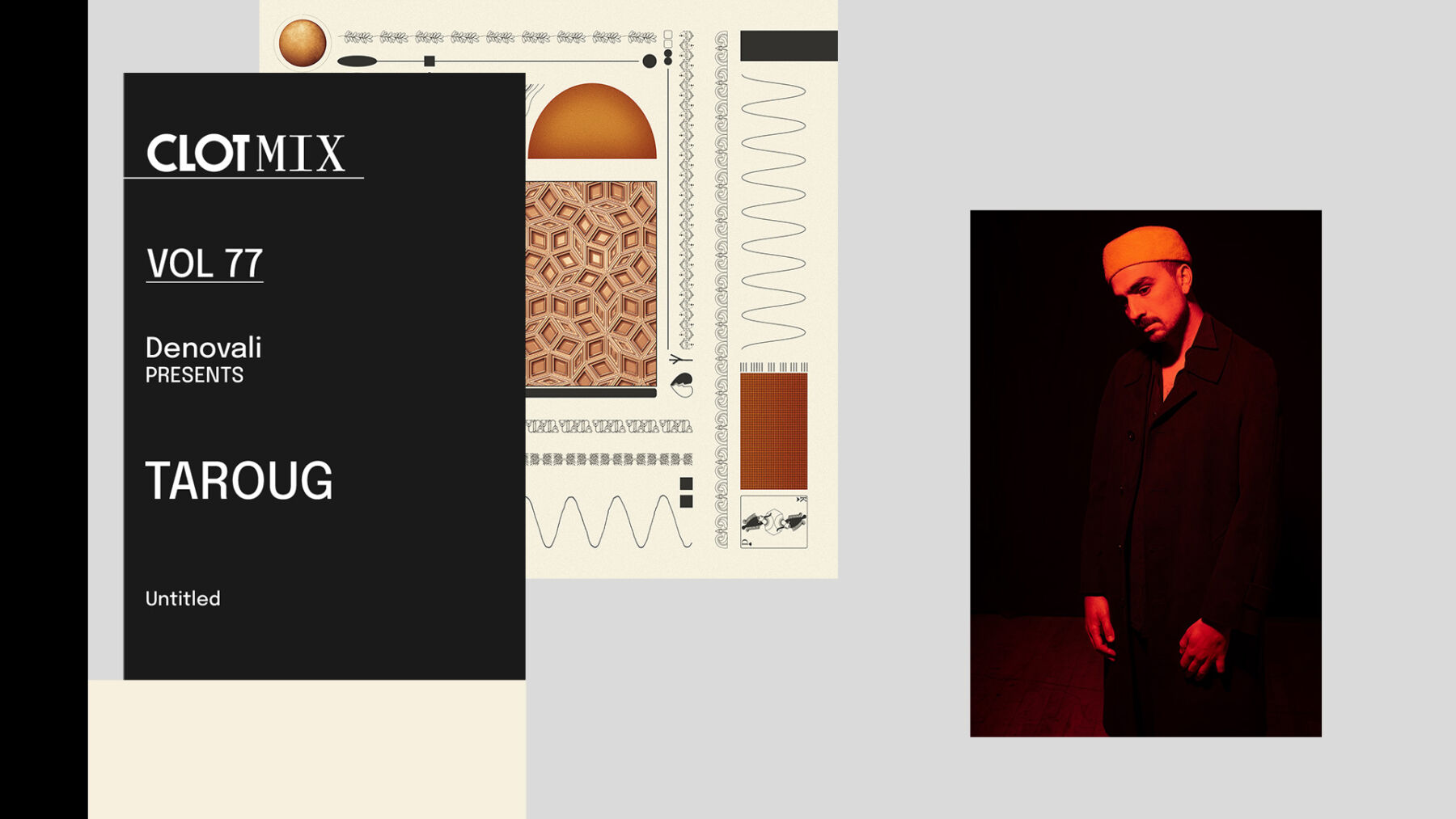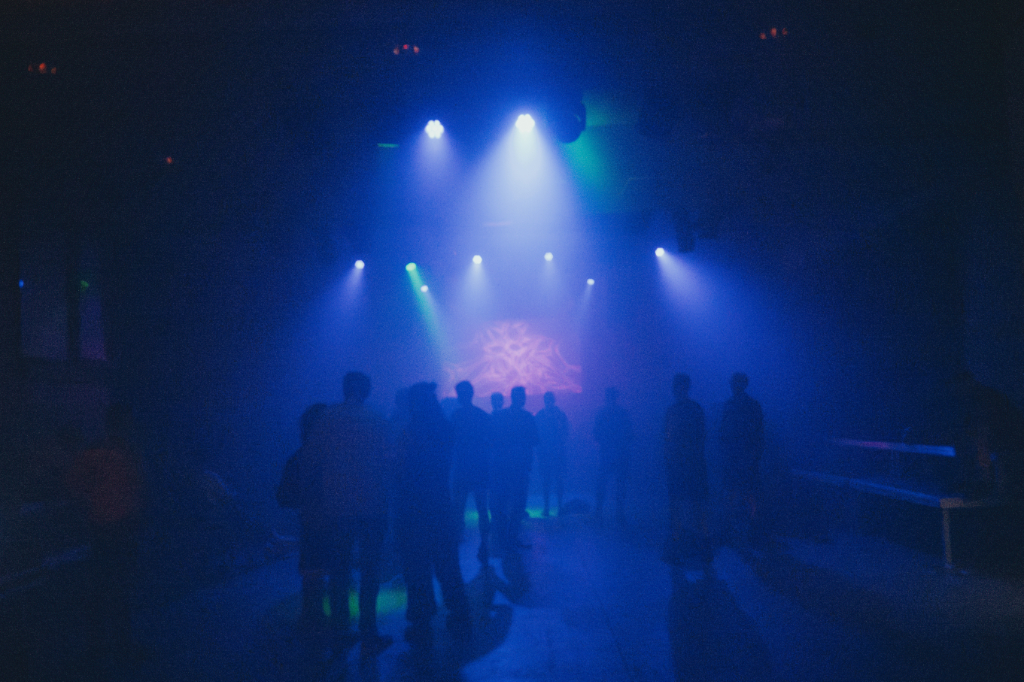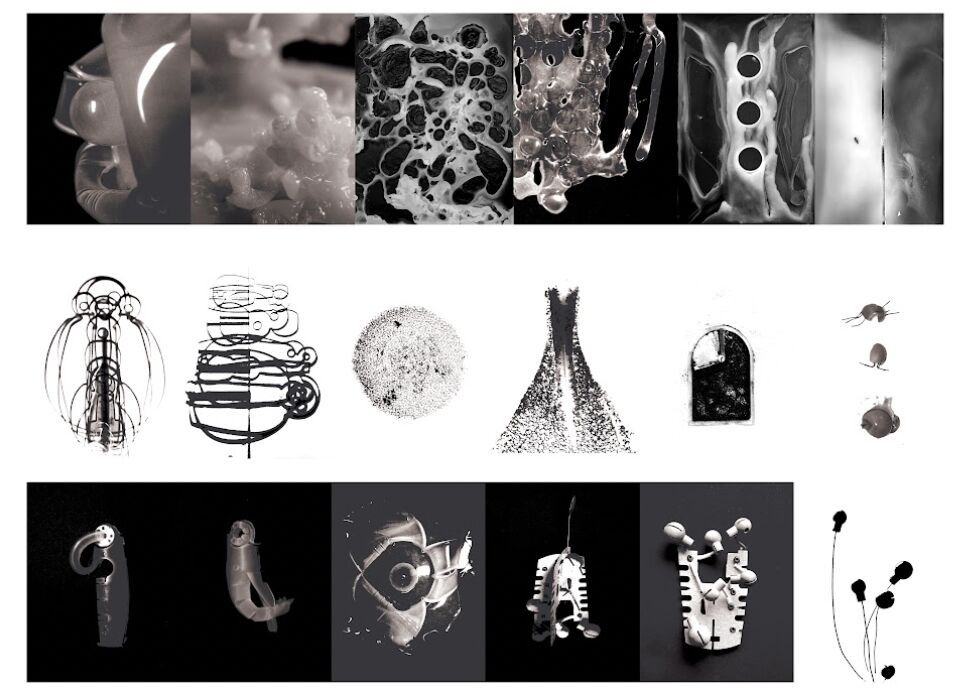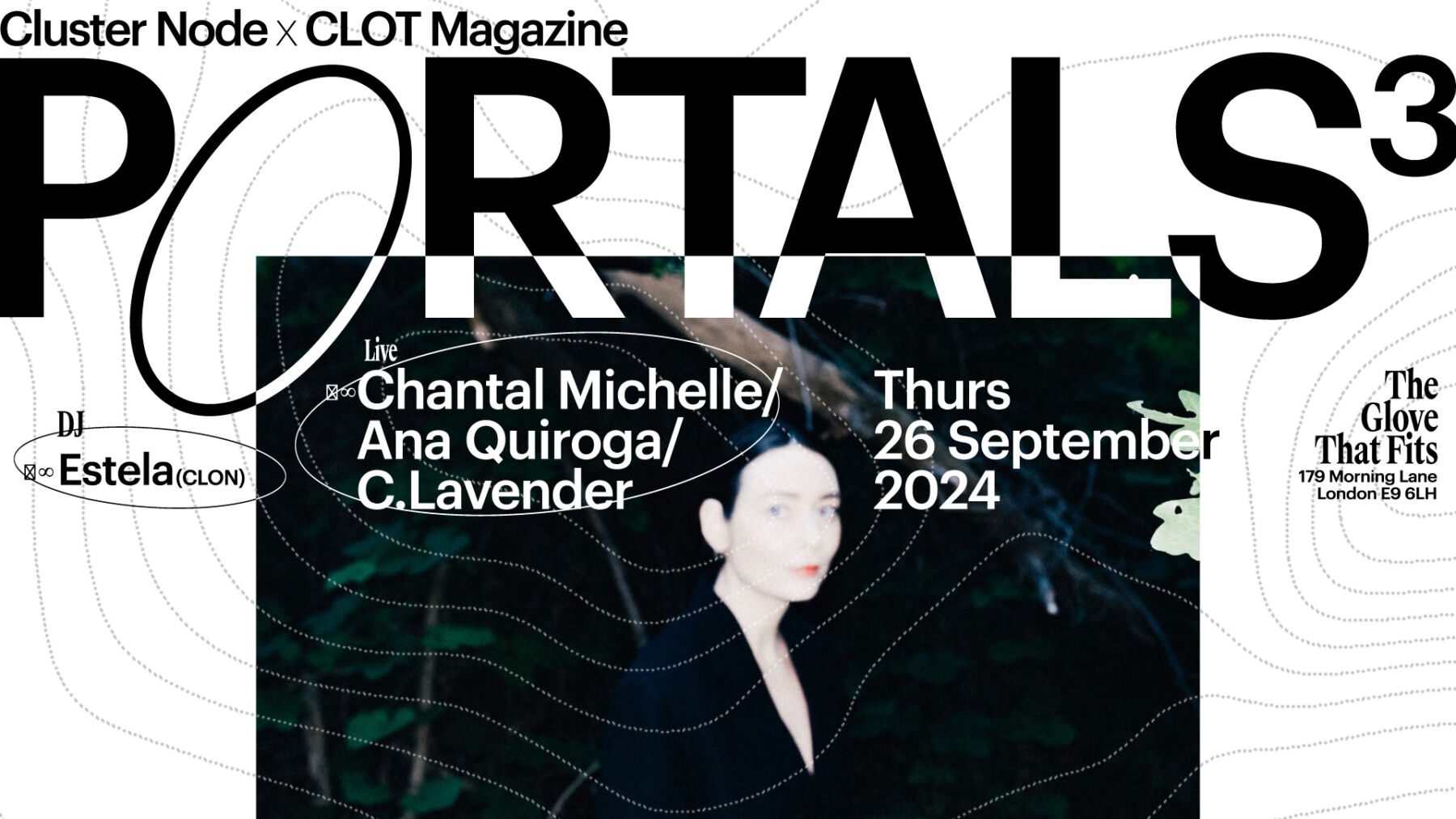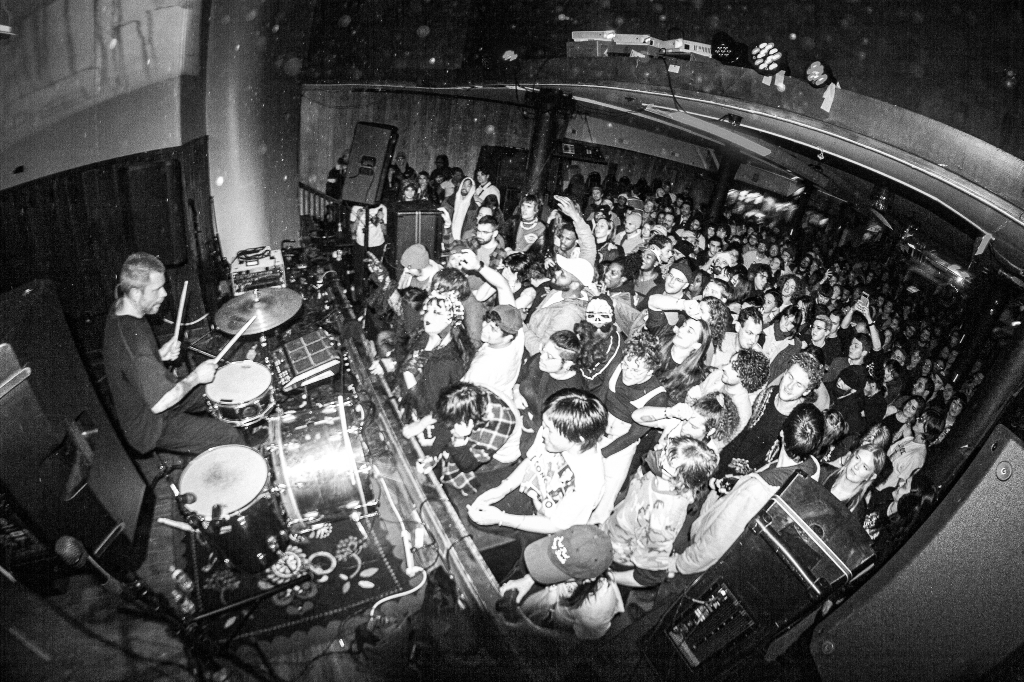Text by CLOT Magazine

We are presenting our latest auditory journey curated by Taroug for CLOT Magazine’s mixtape series. Taroug is the solo project of drummer and electronic music producer Tarek Zarroug whose unique perspective is shaped by his roots in the suburbs of the Tunisian desert and his upbringing in Germany. Following his 2020 EP Perpetual and a series of notable remixes for artists such as Archive, Taroug has continued to evolve and refine his musical aesthetic.
Taroug’s debut album, Darts & Kites, was released on the record label Denovali. Drawing inspiration from the infinite possibilities of Penrose tiling, the album explores themes of change and transformation. This fascination is reflected in the album’s nine tracks and cover art design, creating a cohesive artistic vision.
The album presents a captivating blend of genres and styles, resulting in a sonic landscape that is both haunting and beautiful while weaving together experimental and abstract soundscapes with oriental influences, collected field recordings, pulsating dark beats, and hypnotic vocals. Contributions from notable artists further enrich the album: Beate Wolff’s cello, Benedikt Koch’s saxophone, Timo Schieber’s piano, and Niklas Genschel’s vocals alongside Abdallah Abozekry’s saz.
The album artwork, which is a collaboration with architect and designer Marie Brosius, captures the intricate patterns and ornaments that reflect the album’s themes. It emerges as a mosaic of sound, seamlessly blending the unfamiliar with the familiar.
For this mixtape, the artist mentions he has combined tracks from his album Darts & Kites with unreleased material, sketches, hidden gems, and inspirations from the Tunisian experimental and electronic music scene.
In your debut album, Darts & Kites (Denovali Records), you draw inspiration from the Penrose tiling and explore themes of change and transformation. Can you elaborate on how the Penrose tiling influenced the overall conceptualisation of the album, along with the structure and composition of its tracks?
I previously had the idea to produce and release a full album, but it was aimless and lacking a concept. The songs on this record have all developed over the last 3 or 4 years following changes in my personal life and relationships. My girlfriend, who works as an architect and is very adept at developing concepts, collaborated with me. When we discovered Penrose tiling, we came up with the idea of reflecting its aperiodic pattern of two shapes (darts & kites) about the changes and developments in relationships and connections in life.
In the songs, I explore the breakup of a long-term relationship and my increasing involvement and identification with my Tunisian roots during that time. Additionally, the album touches on the lamentable destruction of nature by profit-driven real estate sharks. We created powerful artwork that incorporates symbols that indicate the various themes explored in the album.
Darts & Kites is a testament to your ability to blend genres and styles, creating a sonic landscape that is both haunting and beautiful. The experimental and abstract soundscapes, enriched by oriental influences, collected field recordings, pulsating dark beats and hypnotic vocals, evoke a depth and richness that is truly unique. How do you balance this blend of experimental, oriental, and traditional elements in your music?
I wouldn’t say I like boundaries regarding creativity, and I don’t want to restrict myself to a specific musical genre. A record should be a journey for the listener, and I find albums that sound the same from the first note to the last to be boring. That’s one reason I love Radiohead so much—they’re masters at reinventing themselves. I always have a specific sound aesthetic and mood in mind, and I believe that’s where all these elements blend together.
Could you describe the process of integrating field recordings into your tracks? What do they bring to your compositions?
I love collecting my field recordings from all over the world. I record anything that sounds intriguing to me, from ambient sounds to percussive elements. It’s a fantastic way to infuse depth and naturalism into my music. Everything becomes more organic and distinctive. Sometimes, I use these recordings to layer synth sounds or craft unconventional drum beats.
A prime example is a still unfinished song (Cicada) that I’ve added to the mix. I recorded cicadas in Thailand and transformed them into dark, reverberating drones. Additionally, I captured the sound of dead stalactites in a cave to create otherworldly percussion elements.
The album also features the notable contributions of other artists, including Beate Wolff, Benedikt Koch, Timo Schieber, and Niklas Genschel. How did their unique contributions influence the final sound of the album?
Most of the collaborators on this record are not just brilliant musicians but also excellent friends of mine. “Darts & Kites” is a deeply personal album I wanted to share with them. Their contributions have certainly added a lot of variety to the record, and some of the songs might have turned out completely different or might only have been finished with their influence. At times, I am yearning for the collective songwriting experience I’ve had in previous bands, and collaborating with other musicians is a way to compensate for that.
Looking back at your previous EP, Perpetual and your journey since then, how do you feel you’ve evolved as an artist?
The Perpetual EP marked my initial foray into using analogue gear in my music. During that period, I was delving into modular synth experimentation. Following the EP, I increasingly pondered what I wished to express as an artist and embarked on numerous explorations. Concurrently, I consistently honed my production skills, and the equipment in my studio continued to expand. Reflecting on it now, I believe I’ve evolved significantly with the new record and have somewhat discovered a path I wish to pursue.
What is your relationship with technology and analogue for your productions nowadays? How do you cope with technology (screen/digital) overload?
I began my musical journey as a drummer, accustomed to sitting in front of an analogue instrument and operating it with my limbs. When I started producing music independently, I primarily worked with Ableton. The only hardware I had was a Vermona drum machine, which I still adore. Today, my studio boasts an array of analogue synthesisers, drum machines, effect units, and acoustic instruments. T
his transformation has significantly altered my production process, constantly freeing me from being tethered to the computer screen. Moving around my studio, setting up and controlling real machines is invigorating. When recording with analogue gear, I appreciate the inability to alter performances in post-production as quickly as with software synths. This limitation can imbue music with a sense of imperfection, rendering it more beautiful and unique.

